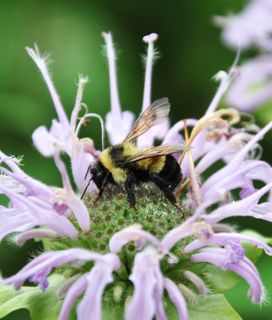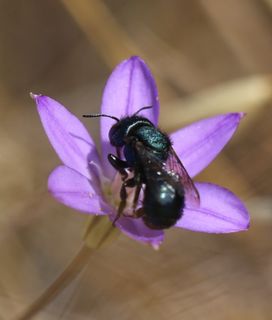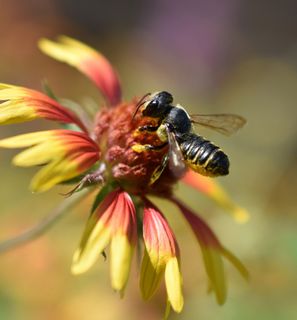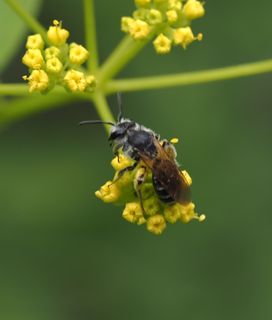NATIVE BEES
DISCOVER THE DIVERSITY
GET TO KNOW NATIVE BEES
Not all bees live together in hives and make honey. An astounding bee diversity exists worldwide, with about 4,000 species living in North America! About 70% of them nest in the ground, and most are solitary. These native pollinators play an essential role in the health of our natural ecosystems and food supply — but many of their populations face risk of extinction. Keep reading to learn about a few familiar native bees and ways you can help them.

BUMBLEBEES
Big, fuzzy and buzzy — bumblebees are the most well-known native bees to visit our gardens. They’re also the only bees native to North America that are truly social, living in a colony of 50-400 that consists of a queen and workers. Bumblebees’ insulating coat of hair helps them tolerate cooler weather, which is why they’re among the first bees we see foraging in spring and the last bees we see in fall.

MASON BEES
The blooming of redbuds and the apperance of mason bees – both exciting signs of springtime! Got fruit trees or berry plants? You'll definitely want these hard-working pollinators around!

LEAFCUTTER BEES
Leaf-surfing, fuzzy-bellied and gentle-natured. That's a leafcutter bee! This productive pollinator emerges in the summertime to visit our flowers and gardens. Megachile actually means "large lipped" and refers to their big jaws which come in handy for cutting out leaf segments for their nests. Let them use some of your leaves, and they'll pollinate your garden in return.

SWEAT BEES
Small but mighty, sweat bees are some of the most prolific summertime pollinators in our gardens, featuring a diversity of sizes and colors. They’ve earned their common name due to their curious attraction to human perspiration — it’s thought they may benefit from the added moisture and salt content. So if a sweat bee lands on your skin to take a sip, don’t swat! She might just need a little extra salt in her diet.

CARPENTER BEES
Gentle giants with a commanding presence, the largest native bees in the U.S. don't go unnoticed thanks to their burly bodies and loud buzzing. Often misunderstood and underappreciated, these beneficial pollinators deserve our respect too!

MINING BEES
Andrenidae is the largest of all bee families, representing a large diversity of sizes, shapes and colors. Commonly called mining bees, they’re known to take up residence in urban and suburban lawns — so if you see small holes in the ground surrounded by little mounds of dirt, let them be! These gentle pollinators make great neighbors.

SQUASH BEES
Squash bees belong to a very diverse tribe of bees called Eucerini (also collectively referred to as long-horned bees). Most of their life is spent underground, and the adults are only active for about four to six weeks in summer, when their preferred food source is in bloom.

SMALL CARPENTER BEES
Have you seen something flying around your flowers that looks like an ant with wings? It might have been a small carpenter bee! They belong to the same subfamily (Xylocopinae) as the much bigger, buzzier carpenter bees. Look closely for these itty-bitty pollinators foraging blooms like poppy mallow, fleabane, black-eyed Susan, Russian sage, wild roses, sunflowers, asters, milkweeds and goldenrod.
